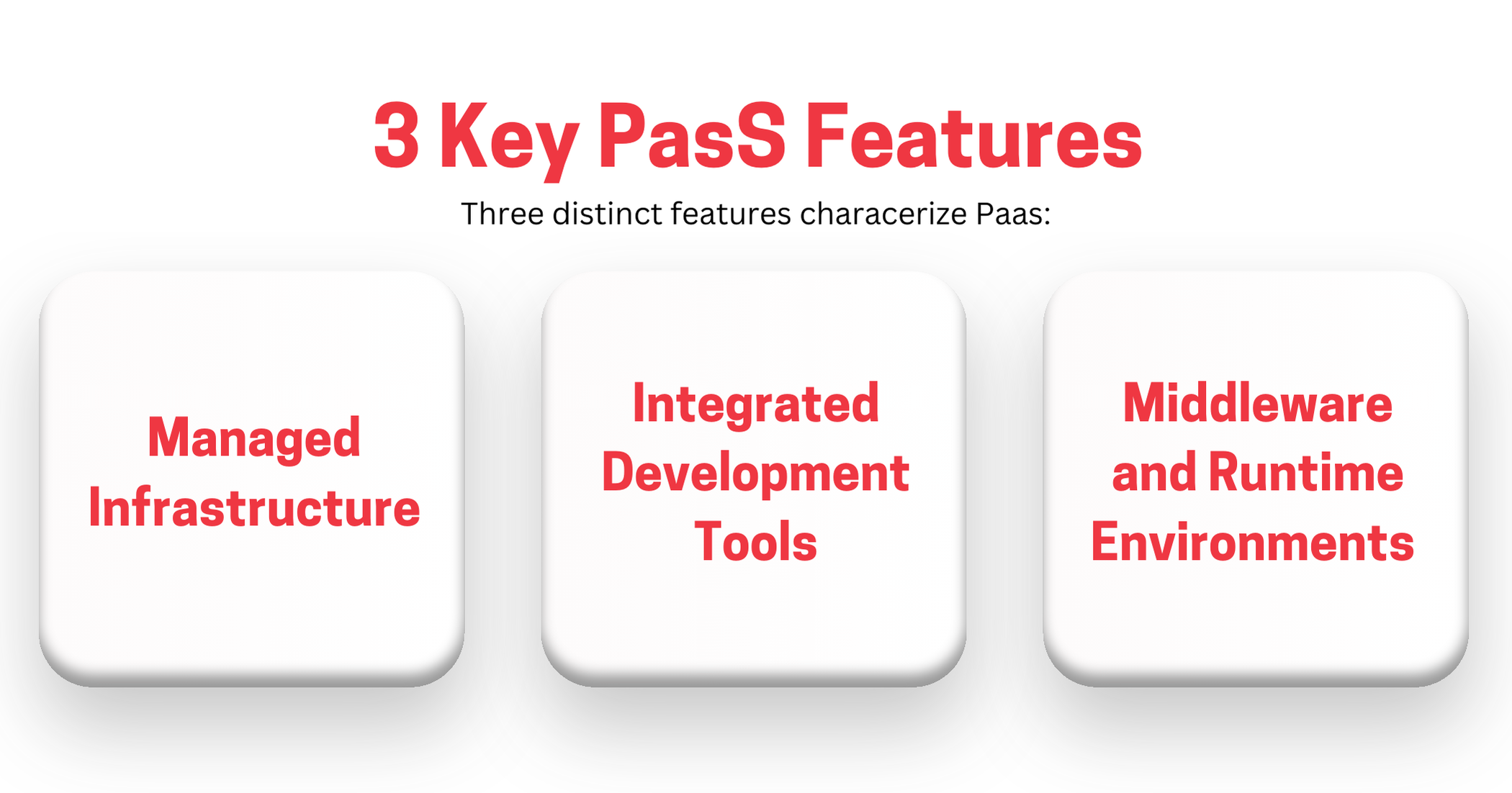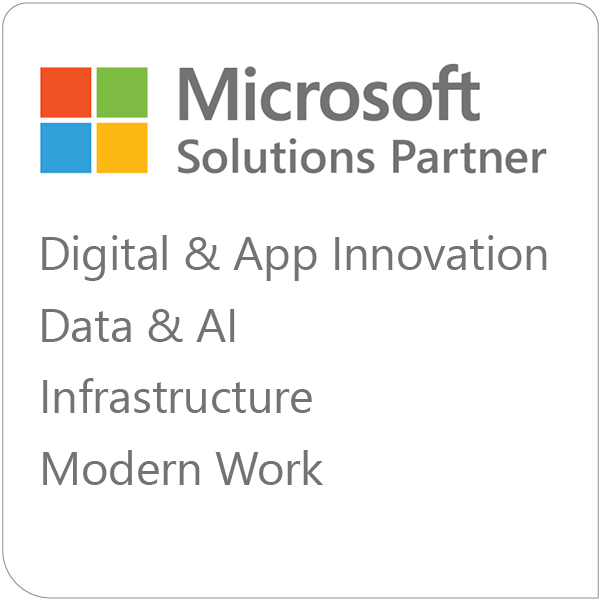Platform as a service (PaaS) is a vital part of cloud computing. It offers a complete environment for software development, deployment, and management, bridging the gap between Infrastructure as a service (IaaS) and Software as a service (SaaS).
This article will uncover what PaaS is, its benefits and use cases, and our recommended PaaS platform, Azure App Services.
You may also like: What Is IaaS? Infrastructure as a Service Explained
What is PaaS?
PaaS is a cloud computing model that delivers a complete platform for software development, deployment, and management. It sits right in the middle between IaaS which delivers infrastructure and SaaS which delivers software over the internet.
Another way to explain PaaS is that it integrates managed infrastructure, development tools, and runtime environments. This makes it easier for developers to focus on writing code instead of wasting time managing the required resources.
You may also like: What is SaaS? Software as a Service Explained
Short History
The PaaS concept started to take shape in the mid-2000s, a time when the demand for cloud computing was on the rise. Tech giants were the first companies to launch PaaS platforms that enabled development and deployment on top of existing CRMs.
Over the years, more tech giants joined the PaaS market, introducing unique features and innovations to stay competitive in this growing industry. As a result, the evolution of PaaS involved many enhancements and will likely be continuously improved for many years to come.
3 Key PaaS Features

Three distinct features characterize PaaS:
- Managed infrastructure
- Integrated development tools
- Middleware and runtime environments
PaaS providers take care of all the infrastructure management complexities, such as servers, storage, and networking. This way, developers and systems administrators no longer need to worry about the underlying infrastructure.
Built-in development tools provide an integrated environment for creating, testing, and deploying applications. These tools include integrated development environments (IDEs), version control systems, and continuous integration/continuous deployment (CI/CD) pipelines.
Middleware and runtime environments are another core part of PaaS platforms. They are necessary for running applications, including database management systems, web servers, application servers, and more.
After an initial overview of what PaaS is, the next thing to learn is its core components.
You may also like: Cloud Migration Techniques: What Is Lift and Shift?
PaaS Architecture
The architecture of PaaS can be divided into three main layers, namely the infrastructure layer, the platform layer, and the application layer. Here’s a quick overview of each.

1. Application Layer
Sitting at the top is the application layer that developers use to interact with the PaaS platform. It includes everything from development tools and APIs to various other services.
Developers can use IDEs, version control systems, and CI/CD pipelines to streamline their workflows. Monitoring and analytics tools help them further understand application performance and usage patterns, promoting continuous improvement.
2. Platform Layer
Next up, there’s the platform layer which brings all the tools, middleware, and runtime environments needed for software development. Its purpose is to abstract the complexities of the PaaS infrastructure, creating a seamless development environment for building, testing, and deploying, and testing applications.
This layer helps boost productivity and performance by including services such as databases, messaging queues, and caching. It also handles component orchestration, which allows different parts of an application to work together more effectively.
3. Infrastructure Layer
The infrastructure layer is made of physical and virtual resources such as servers, storage, and networking. It serves as a foundation and is managed by the PaaS provider to ensure high availability and security of the underlying hardware.
This layer includes features like load balancing, automatic scaling, and backup recovery, which are essential for application performance and reliability.
Benefits of Platform as a Service
While there are countless benefits to PaaS platforms, this section will cover the most significant ones, such as simplified development and a faster time to market.
Simplified Development Process
As mentioned, PaaS providers offer a comprehensive set of tools and environments that help reduce the need for manual setup and configurations. Developers can immediately start focusing on writing code while benefiting from pre-built components and services that simplify the development lifecycle.
Reduced Time to Market
Another important benefit of PaaS is a shorter time to market. Integrated development and deployment tools can make prototyping, testing, and deployment of applications consistent and efficient.
Scalability and Flexibility
PaaS infrastructure has a highly scalable nature that supports varying application loads without the need for manual intervention. Companies can use it to automatically scale the required resources based on moment-to-moment demand. This feature improves performance stability while maintaining great cost efficiency.
Cost Efficiency
Speaking of cost-efficiency, this is a major feature of Platform as a service. Eliminating the need to supply and maintain infrastructure leads to reduced spending. The pay-as-you-go pricing helps companies further by ensuring they only pay for the resources they use.
PaaS Use Cases
PaaS platforms are highly versatile and can be applied to many different industries. Here are some common use cases to illustrate this point further.
1. Application Development and Deployment
PaaS is ideal for developing and deploying web and mobile applications. Software companies use its tools, libraries, and frameworks to greatly improve their complete software development lifecycle. From easy cloud deployment and scalability to advanced pre-built security features, these platforms are essential for anyone looking to build software solutions at scale.
2. API Development and Management
PaaS platforms offer a full set of tools for creating, testing, and managing APIs. This helps developers to not only design and secure APIs, but enables administrators to monitor their usage to keep them running efficiently over time.
3. IoT Applications
Another major use case involves Internet of things (IoT). PaaS offers a strong infrastructure that can support large amounts of data generated by IoT devices. This includes features such as real-time processing, analytics, and visualization. Additionally, PaaS platforms can help derive insights from IoT data streams thanks to their support for device connectivity, data ingestions, and machine learning.
4. Data Analytics and Business Intelligence
Companies use powerful PaaS data analytics and business intelligence solutions to analyze large datasets and make informed decisions. These solutions include data warehousing, machine learning, and visualization tools, which together help turn raw data into valuable business intelligence.
5. DevOps Practices
PaaS platforms integrate DevOps solutions for CI/CD pipelines, automation, and monitoring. Development and operations teams use these solutions to collaborate more efficiently and improve the speed and reliability of software delivery. They can also automate repetitive tasks and get real-time insights into application performance. Employee productivity and software quality get a big boost as a result.
Leading PaaS Provider: Microsoft Azure App Services
Today, there are several leading PaaS providers that organizations can choose from, each with their own unique features. Our favorite at Emergent Software is Microsoft Azure App Service.
Microsoft Azure App Service
Microsoft’s PaaS is a comprehensive solution that enables the development and deployment of web apps, mobile backends, and RESTful APIs. It integrates with other Azure services and supports various programming languages. Azure App Service offers features such as auto-scaling, traffic management, and a robust security framework.
Conclusion
PaaS simplifies software development by offering a complete platform for building, deploying, and managing applications. By bridging the gap between IaaS and SaaS, PaaS enables developers to focus on writing code instead of managing infrastructure. It also frees up administrators and operations teams to focus on deployment and app administration.
The PaaS architecture is built from three layers with distinct roles: infrastructure, platform, and application. They work together to simplify the development process, reduce time to market, and improve cost efficiency.
Streamline Development with PaaS
Ready to leverage the power of PaaS for your next project? Reach out to Emergent Software today and discover how Microsoft Azure can transform your software development process.
FAQ
Here are some questions that people frequently ask about PaaS. They can provide further clarity on the topic.
What is PaaS vs SaaS?
PaaS provides a platform for developers to create, test, and deploy applications, while SaaS delivers software to end users over the internet.
What is PaaS in simple terms?
PaaS is a cloud computing model that provides developers with a platform to build, run, and manage applications without dealing with infrastructure.
What is an example of PaaS?
An example of PaaS is Microsoft Azure App Services.
How is PaaS deployed over cloud?
PaaS is deployed over cloud infrastructure managed by the service provider, which developers access via the internet.
What is the main focus of PaaS?
The main focus of PaaS is simplifying the development, testing, and deployment of applications.
What are the different types of PaaS?
The different types of PaaS are Public PaaS, Private PaaS, and Hybrid PaaS. Public PaaS is hosted on the provider's cloud infrastructure. Private PaaS is hosted on private infrastructure, providing greater control and security. Hybrid PaaS combines elements of both public and private PaaS, offering flexibility and scalability.
What is the PaaS strategy?
The PaaS strategy is to provide a scalable, flexible platform that reduces the complexity and cost of developing and managing applications.






